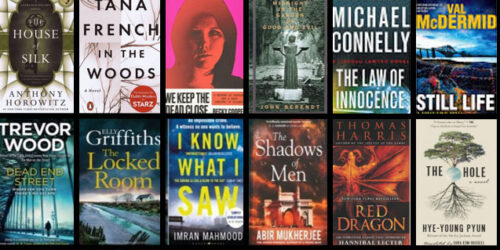
Julia Crouch is a former theatre director and playwright who has carved out a successful place for her novels in the genre of Domestic Noir – a term she herself coined. Below, she provides five important tips for keeping readers on the edge of their seat.
Viewpoint is your friend
Stories can be told from the point of view of many different characters, each with their own take on the events. Choose who is doing your telling very carefully, work with their voices, character, secrets and lies, reliability or lack thereof, and the spaces between different points of view. You can weave a wonderfully rich pattern this way. This doesn’t mean that you have to write in the first person (‘I’) – you can get right up close inside a character’s head by using third (‘she’). A cool, detached, narrator can be helpful, too, but you have to be clear who and what they are, and why they are there.
Hold back
Your reader doesn’t need to know everything, all at once. In fact, very often, the less you can tell them the better. Just give them what they need to know for your story at that particular time.
Structure is important
There is a reason that screenwriting gurus bang on about the three-act structure – setup, confrontation and resolution – and that’s because it works. If you have any storytelling bones in you at all, you will more than likely, even subconsciously, end up with a structure like this. But it’s helpful to bear it in mind and, whether you structure beforehand (as a plotter), or after (as a pantser), run your plot through that mill.
Time is not a fixed continuum
Not in novels, nor in quantum physics, but I’ll just deal with the novel bit here. Back story doesn’t have to just sit in the past. While it is being read, it is the present of your story world, as much as the current day scenes are. The reason it is there, though, is to provide causality – to show why things are happening in your present, and that is the engine of any plot. You can start with the back story, end with the back story, distribute it evenly throughout your narrative. Just put it in the place that serves you best.
Twists
For any crime novel – and, to a greater or lesser extent, for any novel of any genre – it is most important that the reader doesn’t see what’s coming or work the resolution out too early. Holding back, as in point 2, above, helps. But twists that arise out of the narrative are most useful, and even expected in certain sub-genres (and I’d include my own, Domestic Noir, in this). A twist has to earn its existence, though. It can’t rely on red herrings, or outright lying by you, the novelist (although unreliable narrators, handled carefully, are permissible). If the reader goes away feeling cheated, you’ve lost.
Julia Crouch is the author of five Domestic Noir novels: Cuckoo, Every Vow You Break, Tarnished, The Long Fall and Her Husband’s Lover. She teaches our Introduction to Crime Writing online course. Find out more →
Subscribe to the Writing Life podcast
Packed with advice and guidance from experienced writers and our course tutors.
You may also like...
25 essential tips for writing gripping crime fiction
Crime writers and creative writing tutors offer their crime writing tips to help writers of crime fiction, mysteries, thrillers and noir.

19th July 2022




